Much has been penned about the Jeep Wrangler Rubicon’s effectiveness off-road – and we’ve been responsible for a fair chunk of that, having done plenty of hard-core four-wheel driving in it – but we haven’t towed with it … until now.
So, how did it do? To find out, read on.
Jeep Wrangler Unlimited 2020: Rubicon (4x4)
| Engine Type | V6, 3.6L |
|---|---|
| Fuel Type | Unleaded Petrol |
| Fuel Efficiency | 10.3L/100km (combined) |
| Seating | 5 |
| Price From | $46,970 - $54,560 |
| Safety Rating |
|
Does it represent good value for the price? What features does it come with?
The Rubicon, flagship of the Wrangler range, is available as a four-door, four-seater only and with a choice of V6 petrol ($63,950) or 2.2-litre turbo-diesel engine ($68,950). Our diesel tester had a listed ‘price as tested’ of $71,350 because it had the Rubicon Luxury Package ($1950) and the brand’s Trail Rail Management System (i.e. sliding tie-down points in the cargo area, $450).
The luxury package comprises black leather seats (standard Rubicon has cloth seats), leather gear-knob and handbrake handle, heated front seats and steering wheel, as well as colour-coded wheel-arches.
Our Rubicon had a Redarc electric trailer brake system on-board for towing purposes and I reckon that ‘price as tested’ figure doesn’t factor in the tow gear.
Standard features include 8.4-inch touch-screen infotainment system with sat nav (including off-road mapping) and Apple CarPlay/Android Auto, a nine-speaker sound system, LED lights, 230V inverter, 17-inch alloys, as well as all of its off-road gear which includes BF Goodrich Mud Terrain tyres, dual-range transfer case with 4.0:1 low-range reduction ratio, 70.3:1 crawl ratio (in the diesel; 77.2:1 in the petrol), front and rear locking differentials and a swaybar disconnect system.
Driver-assist tech includes AEB, blind-spot monitoring, full-speed forward collision warning plus active cruise control, trailer-sway control, tyre-pressure-monitoring, hill-start assist, hill descent control and more.
Our tester had a ‘bright white’ exterior, a standard colour.
Is there anything interesting about its design?
The Rubicon is the Wrangler line-up’s no-compromise off-roader so it has that very distinctive Rubicon appearance – chunky, blocky and mission-ready with mud terrain tyres to boot – while managing to balance out the best of the model’s old straight-up-and-down presence with slightly softer edges and styling that leans towards being a tad modern.
What are the key stats for the engine and transmission?
Our tester has a 2.2-litre four-cylinder turbo-diesel engine (147kW at 3500rpm and 450Nm at 2000rpm), and an eight-speed torque-converter automatic transmission.
It’s a tidy combination mostly, but there’s a disconcerting amount of lag between putting your foot down and actually getting a move on, which is not ideal when trying for swift moves off the mark or bumping up the pace to merge into traffic, or even during overtaking on the highway.
How practical is the space inside?
The interior is snug, durable, and well suited to those people enamoured with the outdoors lifestyle. The Rubicon has solid grab handles, chunky dials, knobs and switches, tensioned net pockets on the doors and seat-backs, and grippy small-storage spaces.
Upfront there are USB and USB-C ports, air vents and a cool forward view to enjoy.
For rear-seat passengers, there are air vents in the back of the centre console, as well as twin USB and USB-C connections, and an 230V inverter plug.
There are two ISOFIX and three top-tether child-seat anchor points on the back seat.
Rear cargo space is listed as 2050 litres with the seats folded down near flat; and 897 litres with the rear seats in use.
What's it like as a daily driver?
Seats all-round are rather upright but supportive.
Its steering is a lot more swimmy on-road than I remembered from my last drive and it has a real tendency to body-roll through corners, every corner, no matter how conservatively you’re driving it.
There’s a bit of turbo lag from a standing start and while on the move, which makes ducking and diving through traffic more problematic than it should be, however, the little diesel remains eager enough, if not lively, at urging the 2160kg Rubicon along during general driving.
Surprisingly, for such a chunky unit, the Rubicon doesn't produce as much of a racket as you'd assume it would – most noise comes from its big wing mirrors and mud terrain tyres and most of that is reduced to a low-level thrum at speed.
Otherwise, the Rubicon is pretty impressive on-road, for a purpose-built off-roader, and it is a comfortable enough daily driver.
What's it like for touring?
As mentioned earlier, we’ve done plenty of kms in the new Rubicon off-road so this time we concentrated on towing.
The Rubicon’s towing capacity is 750kg (unbraked) and 2495kg (braked) and it has a maximum tongue download of 250kg.
We borrowed a 7.2m-long Jayco Journey Outback from our good mates at Jayco Nowra for this test. This Outback has a listed tare weight of 2100kg, with a 175kg towball weight.
The Rubicon has a listed tare weight of 2160kg, a GVM (gross vehicle mass; the maximum your vehicle can legally weigh, fully laden) of 2630kg, and a GCM (gross combined mass; the maximum your vehicle and trailer combination can legally weigh) of 4876kg.
So, with two blokes (ahem, about 170kg total) and camera gear (10kg) onboard the Rubicon (2160kg), and the caravan (2100kg) at the rear, we ended up with an approximate total weight of 4440kg, so we were 436kg shy of the 4876kg GCM.
But we were carrying very little in the Rubicon, so it just goes to show that it’s absolutely crucial to pay attention to these capacity figures because it doesn’t take long to get near those thresholds if you’re packing for a night or two away and also towing a caravan.
The best and safest approach is to stay well under your tow vehicle’s towing capacity figure and its GVM and GCM. Remember to factor into your towing equation that your vehicle will be fully loaded with driver, passengers, camping gear and more. (For more on vehicle weights, read Mark Oastler's yarn).
The front of the Rubicon rose 1.5cm when hitched up to the 2100kg caravan; and it dropped a rather substantial 5.5cm at the rear.
The reversing camera view is clearly depicted on the main screen, along with directional sight-lines – including one over the towball – to help you back the Rubicon into place, so you can hook up your trailer.
Our test loop was more than 150km long and a good mix of stop-start driving in a coastal NSW town, bumping along the chopped-up bitumen of back-country roads, cruising on a highway, as well as a brief stint on a slightly rutted dirt road at low speed.
Once underway, a few things became swiftly obvious. The Rubicon looks like a solid towing platform – low, wide, long-ish and squat – but, in reality, with this 2100kg load behind, it tended to flail a bit under its leisure-van burden.
At various times, the Rubicon exhibited pronounced side-to-side movements, especially when it and the caravan evened out back onto level road after gradual downhill sections. Gusty winds surprised us a few times, with one particular burst kicking off a minor trailer-sway episode, which I scrambled to correct.
The Rubicon also tended to succumb to light back-and-forth shunting during general driving – never terrible, but always noticeable.
Under load, the Rubicon’s engine is eager enough, with decent pulling power across the rev range, but its transmission is optimised in manual mode rather than auto, as you need to remain vigilant to get the most out of it. Even then, it takes a fair bit of throttle to get the whole thing moving along at a fair clip and uphills especially need plenty of right boot.
On downhills, the Rubicon-and-caravan combination tended to run away a little bit – in fact, judicious use of the brake was required to rein in the whole package on one particular steep-ish highway hill.
Overall, the Rubicon showed itself to be a competent tow vehicle, rather than anything special.
How much fuel does it consume?
The diesel Rubicon has a claimed fuel consumption of 7.5L/100km (combined). It has a 81-litre fuel tank.
We recorded 7.7L/100km after more than 130km of unladen driving; the dash-indicated fuel-consumption figure was 8.7L/100km. We didn’t do any 4WDing on this test.
From more than 130km of towing, we recorded 13.5L/100km; the dash-indicated fuel-consumption figure was 13.6L/100km. Our drive included coastal town roads, highway and a small portion of dirt road, which was rutted in sections.
Warranty & Safety Rating
What safety equipment is fitted? What safety rating?
The Rubicon has a one-star ANCAP safety rating but that's based on Euro NCAP testing, and up-to-date Australia-specific testing is expected to be undertaken soon.
The Rubicon has AEB, dual front and side airbags, blind-spot monitoring, rear cross-traffic alerts, active cruise control, parking sensors, reversing camera, tyre-pressure-monitoring system and more.
What does it cost to own? What warranty is offered?
The Rubicon has a five-year/100,000 km warranty, including unlimited kilometres, five-year capped-price servicing and lifetime roadside assistance as long as you get serviced by a Jeep dealer.
Capped price servicing is $499 per service for diesel Wranglers and service intervals are scheduled at 12 months/20,000km for the diesel.
Verdict
The Rubicon is a great 4WD tourer but it’s only really a medium-duty tow platform. With a 2495kg maximum towing capacity, it’s obviously nowhere near the towing ability of a LandCruiser, Patrol or even most dual-cab utes, but it’s perfectly adequate if its intended use is to tow a sub-2000kg caravan or a camper-trailer while loaded up to its (legal) limits with your family or mates and camping gear.
Its fuel consumption was pretty impressive when towing 2100kg around, but the Rubicon's ride and handling was entirely another matter. For something that looks so settled and stable when unencumbered, the Rubicon was anything but when towing and, at inopportune moments, the caravan, not the tow vehicle, seemed to dictate the direction of travel with pronounced side-to-side movements at the rear.
As an off-road vehicle the Rubicon has few, if any, rivals; as a tow vehicle, it should only ever be used for light- to medium-duty towing.
(Please note that the 3.5/5 Adventure score applies to this tow test only. On a previous test I gave the diesel Rubicon a 4.3/5 Adventure score, but that was for its prowess off-road.)







.jpg)
.jpg)












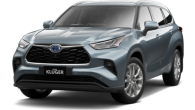



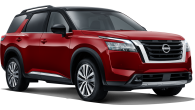








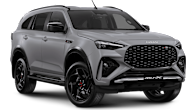



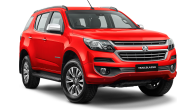


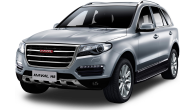




.png)

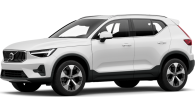




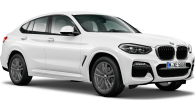

.png)


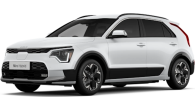
.jpg)
.jpg)



.jpg)